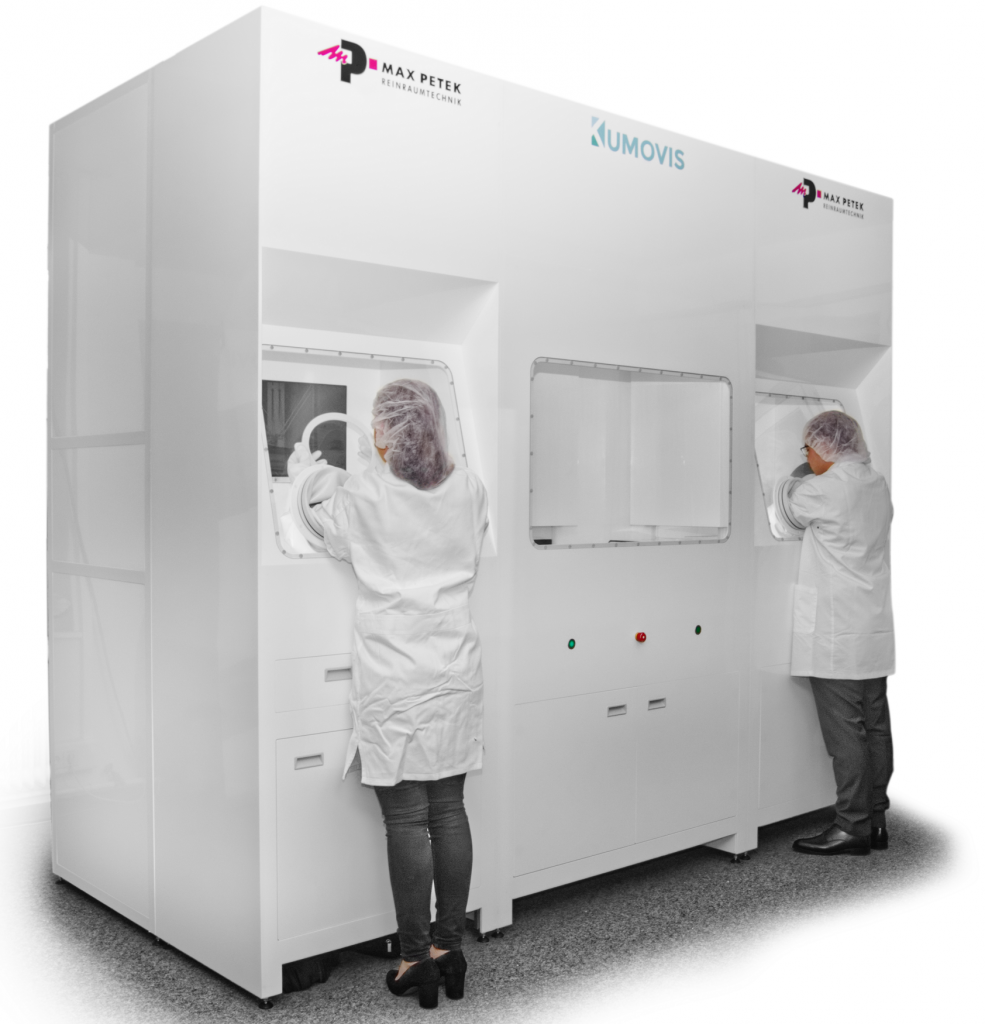
Last year at Formnext I spotted a young team standing around a 3D printer. This team was Kumovis. Kumovis launched a medical high-temperature FDM printer this year. This is a very interesting niche for them to be in PEEK is a very popular high-performance material that can be used for implants in the human body. Up and until now mostly powder bed fusion was used to print PEEK parts. Opening up PEEK for a new process would be very exciting indeed. Currently, there are around ten medical/biopinting companies on the market and about twenty high-temperature 3D printers. The Kumovis is the only one I know that is both medical and high temperature. I think that this is a brilliant niche for them to own. I interviewed the team behind Kumovis to find out what their plans are. Kumovis was founded by Stefan Fischer, Miriam Haerst, Alexander Henhammer, Stefan Leonhardt and Sebastian Pammer.
Alex Henhammer told 3DPrint.com, “the printer will be offered in two versions. The so-called R&D Line is tailored for Research & Development purposes and we will start commercializing in June 2019. Currently, we are producing the pre-series product, which we will test together with our pilot customers. The production line, compliant to medical manufacturing standards is currently in development. A first pilot project will start in 2019 and we are aiming for commercialization in 2020.”
Our goal is to provide a compact 3D-printing system with low investment costs and material waste for medical applications. Consequently, our main customer groups are medical device manufacturers and related suppliers. However, the R&D line can be used in a wide area of applications and addresses any industry or research needing a 3D-printer for high-performance polymers.
We designed the whole system meeting medical regulations right from the start. We focused on two main aspects: Thermal Processing: From our point of view, processing thermoplastics must start with a perfect control of the thermal process. To increase adjustment options, we do not only print in a heated, building chamber, but also integrated a laminar airstream that flows around the part homogeneously. An additional temperature controlled airflow can be used locally. Both airflows are adjustable between 20°C and 250°C. This helps preventing heat congestion and subsequently improves bad optical quality. In sum, this leads to minimized warping effects, an increased layer adhesion and good optical results. Medical production: To fulfill medical requirements, we integrated a cleanroom environment into our 3D-printing system. This excludes particle contamination in potential medical products such as patient specific implants. In combination with process monitoring tailored to medical regulations, we pursue a reproducible process for customized medical series production.

What kind of materials can it print with?
“Our current focus is on processing PEEK and other medical related polymers such as PEKK, PEI, PPSU or PA. In general, we provide an open system that offers great opportunities regarding the thermal properties to fabricate any thermoplastic material.”
With current generation, high-temperature 3D printers chamber thermal management is the single biggest problem. Lack of control over chamber temperature and changes in chamber temperature means that issues with crystallization or the general build quality of parts occur. Parts heat and cool unevenly which may lead to warped parts or misbuilds. Generally, all high-temperature printers could benefit from increased sensitivity to and better control over the entire chamber. That the team is additionally paying special attention to laminar flow could have interesting consequences as well. This seems like a solid approach for the team. If someone asked me what kind of printer I’d want to make, it would look a lot like this one.
Subscribe to Our Email Newsletter
Stay up-to-date on all the latest news from the 3D printing industry and receive information and offers from third party vendors.
You May Also Like
3D Printing News Briefs, April 13, 2024: Robotics, Orthotics, & Hypersonics
In 3D Printing News Briefs today, we’re focusing first on robotics, as Carnegie Mellon University’s new Robotics Innovation Center will house several community outreach programs, and Ugogo3D is now working...
Rail Giant Alstom Saves $15M with 3D Printing Automation Software 3D Spark
3D Spark has entered into a three-year deal with the rail giant Alstom. Alstom, a transport behemoth with annual revenues of $16 billion, specializes in the manufacture of trains, trams,...
Meltio Expands Global Reach with New Partnerships in the Americas and Europe
Spanish 3D printing manufacturer Meltio has expanded its sales network across the globe. With the addition of three new partners in the United States, Brazil, Argentina, and Italy, Meltio aims...
3D Printing Webinar and Event Roundup: April 7, 2024
Webinars and events in the 3D printing industry are picking back up this week! Sea-Air-Space is coming to Maryland, and SAE International is sponsoring a 3D Systems webinar about 3D...































